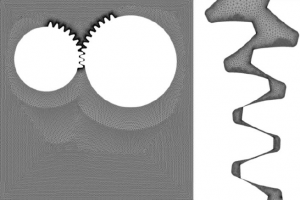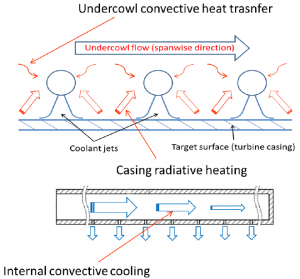ASME Turbo Expo 2019 – GT2019-91309
The development of Ultra-High Bypass Ratio (up to 20) engines with the aim of improving the propulsive efficiency, introduces new challenges for the transmission system in terms of heat management and power losses, since the amount of power transferred through the gearbox is greatly increased. In this respect the accurate estimate of losses at the various flow regimes realized during a typical aeroengine mission within a Power Gear Box (PGB) is essential for the correct design and operation of the engine itself.
This paper proposes a computational methodology to estimate all fluid-dynamic (load-independent) losses, which become a major source of dissipation at the high rotational speeds typical of aeroengines, developing within an epicyclic PGB. The overall procedure is based on the superposition principle and approaches the three fluid-dynamic losses, namely injection, windage and meshing losses, with different numerical techniques.
The simulations of windage effects, which consider the actual PGB geometry including the carrier disk, the lubricant spray-bar and the external casing, are based on steady-state computations. In order to introduce such simplification, a scaling procedure that avoids interference of the stationary and rotating interfaces was implemented following the outcomes of a previous analysis.
The computation of meshing losses employs a fully unsteady dynamic mesh approach and considers a portion of the meshing gears only. Both the sun-planet and planet-ring meshing were considered showing that the latter introduces a much lower level of losses.
Finally the injection losses are calculated considering the oil jet momentum variation with simplified methods based on 0D modelling.
The proposed procedure, based on the superposition principle and applied to a planetary power gear train, is tested against experimental results described in a previous paper focused on a meshing gear pair.


